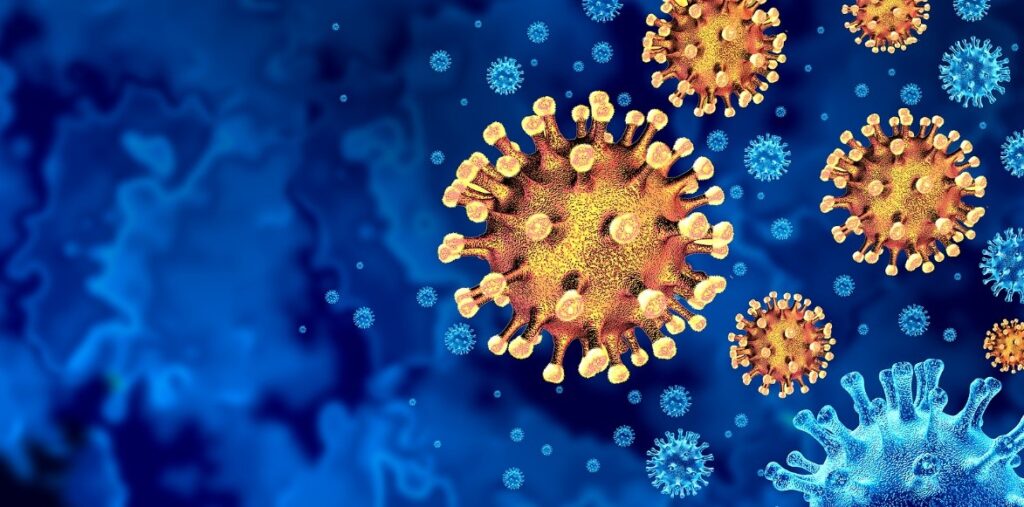According to data released by the Centers for Disease Control and Prevention, the rapidly spreading BA.5 subvariant of Omicron accounts for more than 95 percent of COVID-19 cases in the United States. While researchers continue to learn more about BA.5, hospitalization rates have remained low compared to earlier in the pandemic. Simultaneously, the nature of the pandemic has shifted significantly, and there is now a large population with prior infections, vaccine immunity, or both. This complicates research into the virus. (CBS)
About Omicron
Covid has been mutating or changing shape since its inception. There have already been a few significant variants that have caused massive outbreaks of infection, such as Alpha and Delta. The most recent ones that experts are concerned about – BA.4 and BA.5 – are very similar to the Omicron variant that caused last winter’s wave. The original Omicron strain has a milder virus than its predecessor, Delta, causing less severe illness and mortality.
Omicron was discovered for the first time in Botswana and South Africa in November 2021 and quickly spread across Europe and the United States. Let us understand in depth how the BA.5 COVID-19 variant differs from other strains.
Acute Fever Over Loss of Taste/Smell
According to the CDC report, factors such as hospital stay lengths, ICU admissions, and deaths have been ‘lower than during previous pandemic peaks.’ Most cases were minor, and the symptoms for the BA.5 variant appeared distinct.
The most prevalent symptoms were acute fever followed by fatigue but no loss of taste or smell. Studies conducted in the United Kingdom and the country’s ongoing COVID-19 study indicate that the proportion of ill citizens reporting a loss of taste and smell has decreased dramatically since the beginning of the epidemic. By June 24, 2022, the country’s Office for National Statistics stated that the proportion of individuals who tested experienced gastrointestinal pain, fever, sore throat, and muscle ache increased from May to June 2022. (Katella)
BA.5 Is Less Severe Than the Previous Strains
COVID-19 patients make up a small percentage of hospital critical care unit beds across the country. The rate of new COVID-19 mortality remains higher than at the same time last year, with an “unacceptable” average of more than 300 deaths per day. Even among more vulnerable groups, such as nursing home residents, COVID-19’s daily mortality toll is still a fraction of previous waves. Federal health officials have attributed this ‘decoupling’ to the protection provided by vaccination, particularly subsequent booster doses. (Katella)
The Risk of Reinfection is Higher
The rate of reinfections has increased dramatically since the introduction of the BA.5 variant form throughout the winter. According to federal researchers, the alterations in BA.4 and BA.5 place them among the most distant from the virus’s initial strain in 2020 and even closer to the Beta variation first observed in May 2020 than it is to BA. 1’s Omicron relative.
Individuals who survived a COVID-19 infection before the Omicron variation are only about 15% protected against symptomatic reinfection by BA.4 or BA.5. If a different Omicron subvariant caused the previous condition, this figure rises to 76%. For example, health officials in Washington State have seen a steady increase in reinfections over the last few months. They admit, however, that this figure may be overestimated due to factors such as home testing. (Katella)
Covid-19 Vaccinations Are Effective Against BA.5
A COVID-19 booster shot boosts your immunity. COVID-19 vaccines protect against severe disease, particularly for those who receive a booster shot. Hospitalization and mortality rates are lower for BA.5 than for previous COVID-19 versions, indicating that the vaccinations help prevent hospitalization and death.
Because SARS-CoV-2 has mutated, the Food and Drug Administration (FDA) has encouraged vaccine manufacturers to update their COVID-19 vaccines beginning in the fall of 2022 to protect against the Omicron form. (University of Utah Health)
What Safeguards Can You Put in Place Against Omicron, BA.4, and BA.5?
The BA.5 and BA.4 Omicron subvariants remain a threat in the United States, and experts continue to recommend following infection prevention guidelines. If COVID-19 levels in your area are moderate or high, the CDC suggests that you wear a mask inside. People who don’t have robust immune systems or who are at increased risk should still wear a good mask indoors or in large groups.
The best way to prevent new strains is to get vaccinated and get a booster dose. The virus will spread and change less frequently if more people are fully vaccinated. The most recent information on booster recommendations can be found on the CDC website.
Works Cited
Katella, Kathy. “Omicron and BA.5: A Guide to What We Know.” Yale Medicine, Yale Medicine, 6 July 2022, www.yalemedicine.org/news/5-things-to-know-omicron.
CBS News. “How Is the BA.5 Covid-19 Variant Different from Other Strains?” CBS News, CBS Interactive, www.cbsnews.com/news/covid-ba5-variant-omicron-strains-difference/.
University of Utah Health. “Ba.5 Covid-19 Variant.” University of Utah Health, healthcare.utah.edu/healthfeed/postings/2022/07/ba5-variant.php.
Callaway, Ewen. “What Omicron’s BA.4 and BA.5 Variants Mean for the Pandemic.” Nature News, Nature Publishing Group, 23 June 2022, www.nature.com/articles/d41586-022-01730-y.
 24x7 Available
24x7 Available

